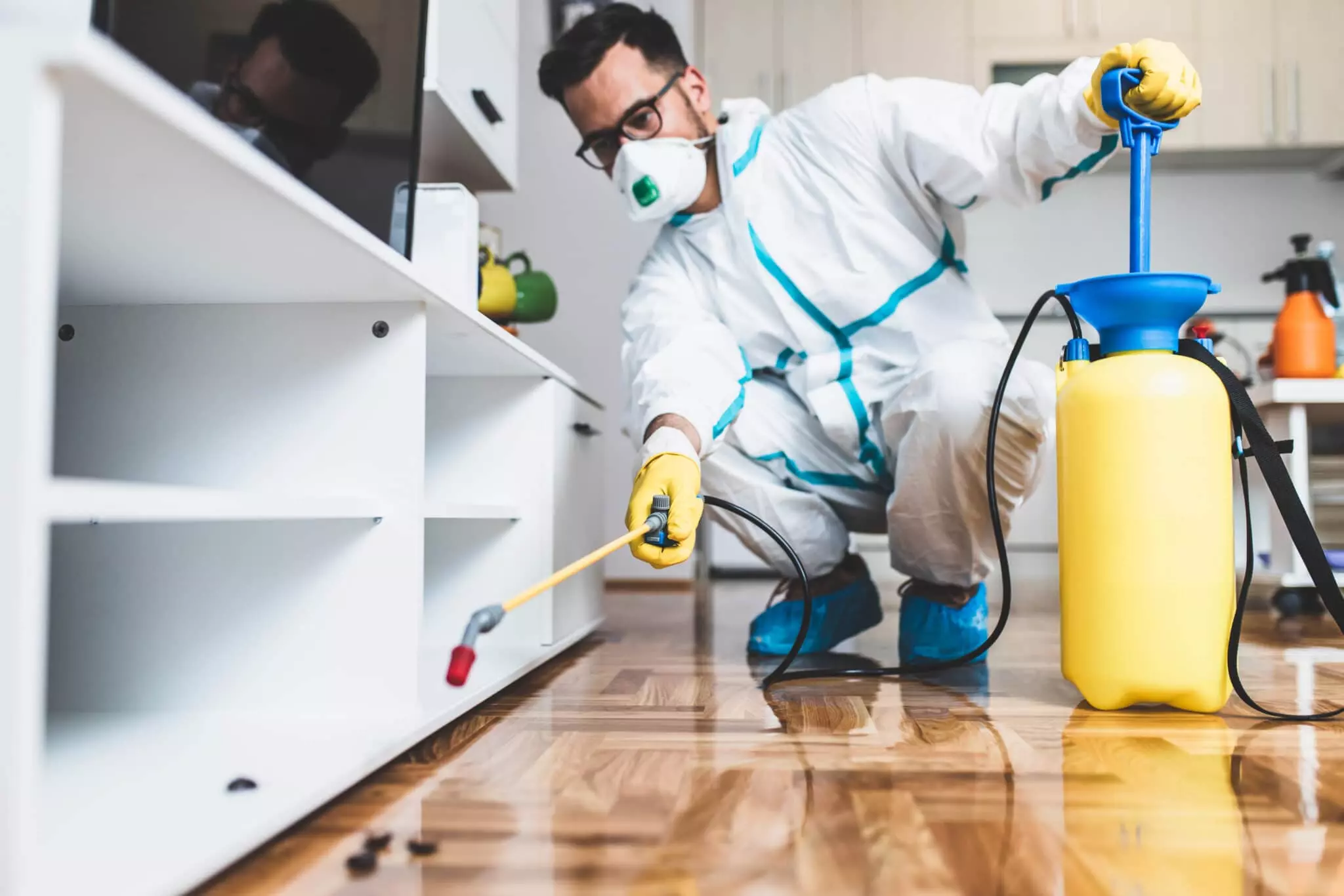Experienced A1 Exterminators Charlotte NC - Quick and Trustworthy Solutions
Experienced A1 Exterminators Charlotte NC - Quick and Trustworthy Solutions
Blog Article
Bed Pest Treatment Malfunction: Contrasting Chemical Vs. Non-Chemical Solutions
In the realm of insect control, specifically when handling the consistent concern of bed bugs, the option between chemical and non-chemical treatment remedies can be a crucial one. Both strategies use distinctive advantages and drawbacks, influencing elements such as efficiency, safety and security factors to consider, and overall expense. By examining the nuanced details of each method, a clearer understanding of which path to go after in attending to a bed pest problem can be acquired.
Effectiveness of Chemical Treatments
Chemical therapies for bed insect invasions have actually been commonly acknowledged for their potent and fast efficacy in eradicating these parasites. When taking into consideration the efficiency of chemical treatments, it is crucial to comprehend that they can offer a fast and complete option to a bed bug trouble.
In addition, chemical treatments have the benefit of using recurring impacts, meaning that they can remain to eliminate bed pests even after the first application. This residual activity is particularly beneficial in combating any type of potential re-infestations. Furthermore, the fast activity of chemical treatments can bring alleviation to people facing extreme bed bug invasions, allowing them to gain back control of their home promptly.
Security Concerns With Chemical Solutions
One crucial facet that requires mindful consideration when utilizing chemical options for bed bug therapy is making sure the security of occupants and the setting. Direct exposure to specific chemicals utilized in bed insect therapies can lead to respiratory system problems, skin irritability, or various other unfavorable reactions, specifically in individuals with pre-existing problems or sensitivities.
Furthermore, the ecological influence of chemical solutions is another considerable factor to consider. Some chemicals made use of in bed bug treatments may be dangerous to useful insects, wild animals, and ecological communities if they seep into the soil or water supply. It is crucial to utilize chemical treatments carefully, complying with safety and security guidelines, and thinking about much less harmful choices to mitigate these dangers and make certain the safe and efficient monitoring of bed bug invasions.
Advantages of Non-Chemical Approaches
Taking into consideration the potential security problems and environmental effect associated with chemical solutions for bed pest therapy, discovering non-chemical approaches provides an appealing option with a number of distinctive advantages. Non-chemical approaches offer a much safer choice for families, specifically those with youngsters, people, or animals conscious extreme chemicals. These strategies remove the threats of exposure to poisonous materials, reducing the potential for adverse health effects. In addition, non-chemical treatments are eco-friendly, as they do not add to air or water pollution, making them a sustainable choice for pest control.
In addition, non-chemical services can be effective in targeting bed pests, consisting of hard-to-reach areas where chemical treatments may not pass through. Techniques such as warmth therapy, vacuuming, heavy steam cleansing, and mattress coverings provide complete removal without using damaging chemicals. Furthermore, non-chemical approaches can be much less turbulent, needing marginal preparation and enabling quicker reentry right into dealt with areas. On the whole, selecting non-chemical bed bug treatment approaches not only prioritizes safety and environmental management but likewise ensures detailed and reliable pest control.
Limitations of Non-Chemical Treatments

In addition, non-chemical treatments usually require several applications to attain effective removal. This can be time-consuming and may not constantly guarantee total elimination of all bed bugs and their eggs, particularly in hard-to-reach or hidden locations.
In addition, the success of non-chemical treatments heavily depends on appropriate implementation and thoroughness, which can be challenging for individuals without expert competence. Poor application of non-chemical methods may lead to insufficient pest spray companies obliteration, leading to relentless infestations and the requirement for extra treatments.
As a result, while non-chemical therapies have their benefits, it is important to acknowledge these limitations and consider them when determining one of the most effective method for managing bed bug infestations.
Price Comparison: Chemical Vs. Non-Chemical Options
Given the limitations related to non-chemical therapies, an important facet to evaluate in the context of bed pest monitoring is the expense comparison in between chemical and non-chemical alternatives. Chemical therapies normally include the application of insecticides by professionals, which can vary from $250 to $900 per room, depending on the severity of the infestation and the dimension of the location to be treated. On the other hand, non-chemical therapies like warmth therapy or steam can be more pricey, with prices ranging from $1,000 to $6,000 for an entire home. While the preliminary expense of chemical therapies might seem reduced, several treatments may be called for to completely eliminate the infestation, possibly boosting the overall price. On the various other hand, non-chemical options may provide a more sustainable and environmentally friendly option, although they can be cost-prohibitive for some individuals. Inevitably, when taking into consideration the internet expense of bed bug therapy choices, it is necessary to evaluate the upfront expenditures against the performance and long-lasting sustainability of the picked technique.
Conclusion

Thinking about the possible safety problems and ecological impact connected with chemical remedies for bed bug treatment, discovering non-chemical approaches provides an encouraging alternative with a number of distinct benefits.Offered the limitations associated with non-chemical treatments, an important facet to examine in the context of bed bug administration is the price contrast between chemical and non-chemical options. In contrast, non-chemical treatments like warm therapy or vapor can be extra pricey, with prices ranging from $1,000 to $6,000 for an entire home. While the initial expense of chemical treatments may seem lower, several therapies might be called for to fully eradicate the problem, possibly increasing the general cost.In verdict, when comparing chemical and non-chemical bed pest treatment choices, it is important to consider performance, safety, advantages, restrictions, and price.
Report this page